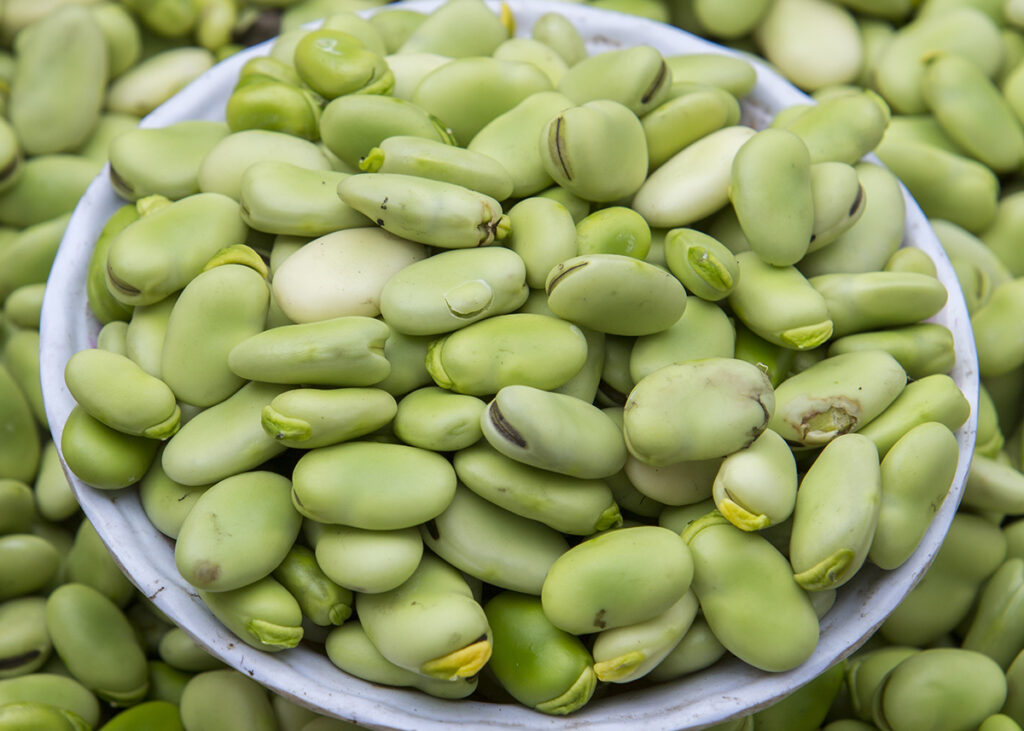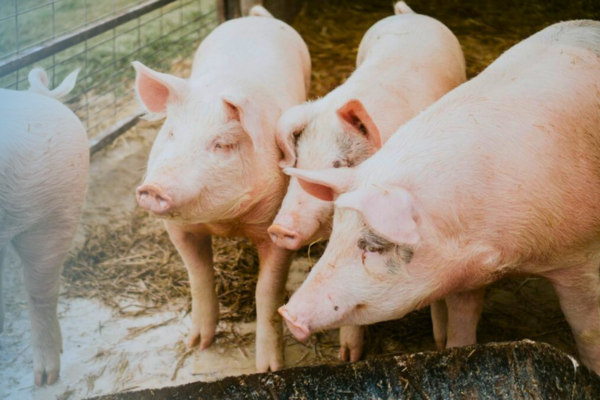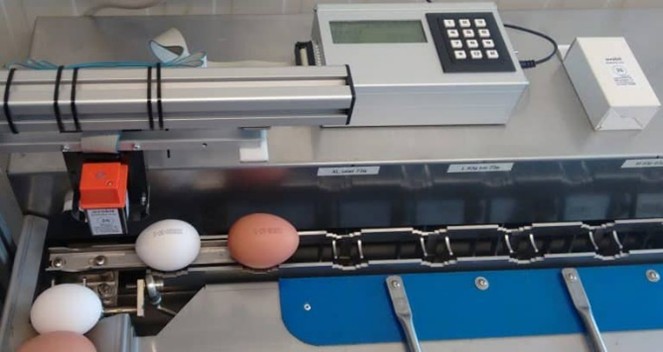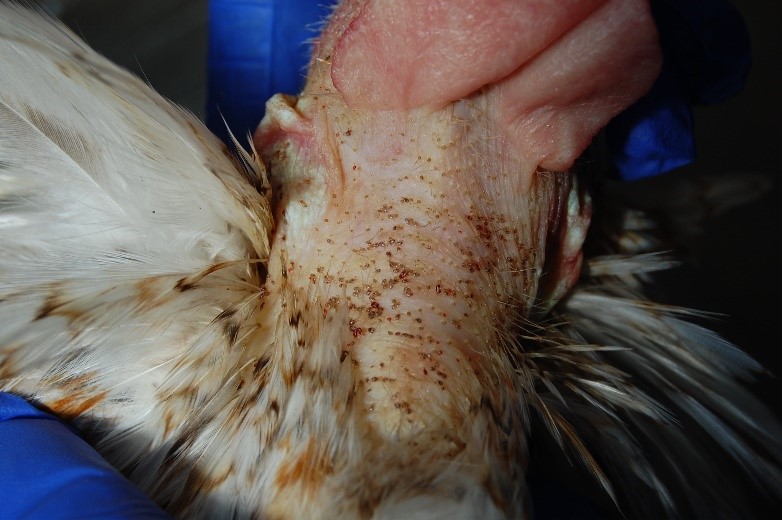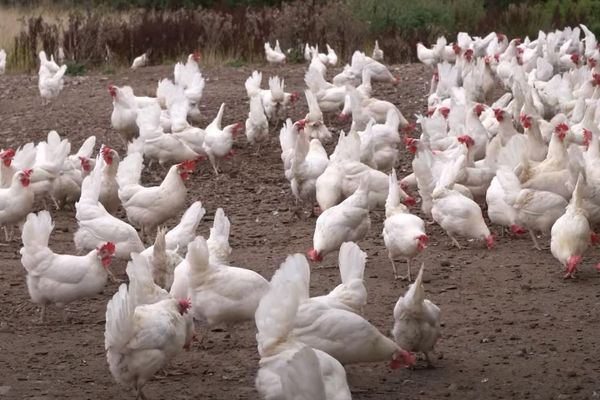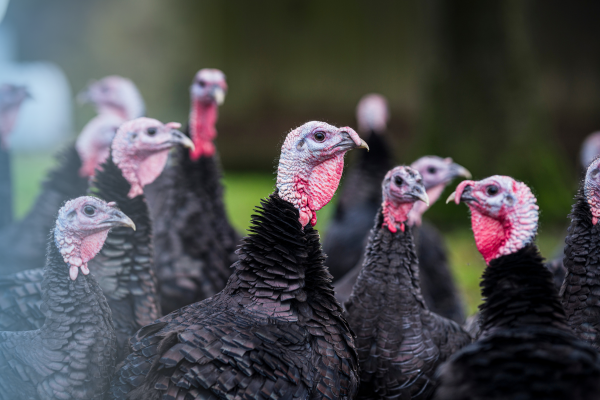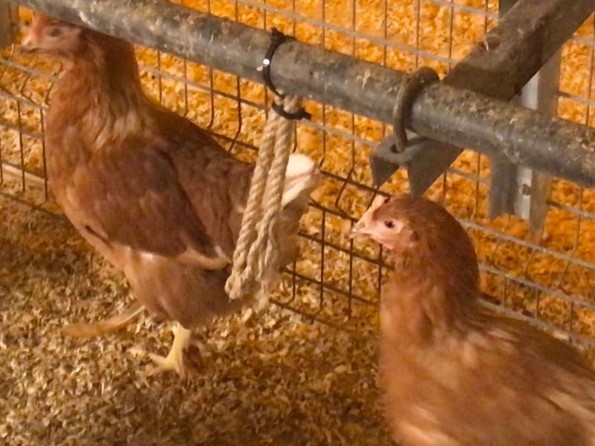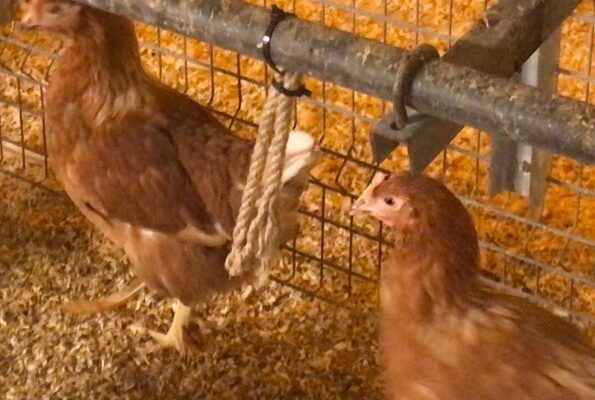Faba Beans for Alternative Protein and Reducing Monogastric Carbon Footprint
8 July 2024This article is part of the Climate Change & Carbon Research Briefings series. More articles in the series can be found below:
- Understanding Natural Capital Markets
- Collecting On-Farm Biodiversity Data with Bioacoustics
- Applicability of Slurry Separation and Acidification on Farms in Scotland
- Advancing Agricultural Practices, Reducing Emissions and Ensuring Sustainable Growth in the Face of Climate Challenges
- Making Sense of Soil Carbon
- Are Methane Inhibitors a Silver Bullet for the Sustainability of Beef and Dairy?
- Mitigating N2O Emissions and Enhancing Yields with Inhibitors and Liming
- Low Emissions Livestock Breeding - The What and the Why
The faba bean has potential across Scotland as an alternative, home-grown protein source for monogastric (non-ruminant) livestock, and also has the potential to reduce carbon footprint versus soya bean meal. This article will take you through the reasons why you might consider adding them to your system.
The argument for faba beans
There are growing pressures on farmers to reduce the impact of agriculture on the natural world. One method to do so is to swap out feed ingredients linked to issues such as deforestation, water waste, and high emissions linked to transportation, with more environmentally friendly alternatives. Currently, debates are ongoing about the viability of using temperate, home-grown legumes, such as the faba bean (Vicia faba L.), in monogastric diets as a potential replacement for imported soya bean meal (SBM). Alongside the crop’s ability to provide multiple ecosystem service benefits, such as requiring lower water inputs relative to other crops and having a high nitrogen fixating ability, sourcing a larger portion of animal feed from domestic producers can reduce reliance on international markets and as such strengthen food security. Thus, incorporating faba beans into the diets of monogastric livestock could largely enhance food system circularity in UK. Nonetheless, there remain concerns about the feasibility of substituting SBM in pig and poultry feed because of the effects substitutes could have on the growth and efficiency of the animals, as well as additional cost burdens for farmers. The exact volume of faba bean meal incorporated in monogastric diets is not explicitly documented in any recent sources.

What are the impacts of current monogastric diets on the environment?
Farmed livestock is an integral part of the British food system. In recent years, the UK has imported over 3 million tons of soybean-related products annually. Specifically, around 2 million tons of these imports are in the form of SBM, which is predominantly used for animal feed, with the vast majority being used for broilers (meat chickens).The UK's reliance on imported SBM highlights the importance of exploring alternative protein sources to enhance sustainability and reduce environmental impacts associated with soybean production. As a result, the largely untapped potential of plant-based protein sources presents an opportunity to meet nutritional needs while also promoting the shift to more sustainable food production systems.
There are two main changes that can be made to ensure a higher degree of food system sustainability when it comes to monogastric animal feed that is dependent on SBM, these being: (1) ensuring that the imports are certified to have been produced in a sustainable way (sustainable soya) and (2) replacing SBM in livestock feed. Given that the UK sources 70% of its soybean product import volume from Mercosur countries,[3] some of which have received global criticism for their environmentally detrimental crop cultivation practices, the latter seems the most feasible. Nonetheless, transitioning away from soybean products remains as much a nutritional challenge as an economic one. SBM contributes high-quality protein to livestock diets, being rich in most essential amino acids to optimise pig and chicken growth.
Other benefits the UK can reap from decreasing its dependency on soybean imports from a select and small pool of countries include a higher degree of resilience to macroeconomic and environmental shocks, and agri-food self-sufficiency through sourcing and supporting home-grown sources.
How faba beans improve sustainabililty
There is an increasing debate about the viability of using temperate-grown legumes in pig and poultry diets as a potential replacement for imported SBM. By reducing the reliance on SBM as a feed input, we have the potential to increase the sustainability of the UK food system provided that the alternative option does not occur any production penalties. For example, if the alternative leads to less animal growth or feed efficiency, then we may require more resources for the same amount of output.
The faba bean is a protein-rich legume, which is well-adapted to grow in most climatic areas of Europe, including Scotland. Different bean cultivars can result in different nutritional values in monogastric diets, largely arising from variation in protein content and anti-nutritional factors. Research on the relationship between growing faba bean pulses on-farm and their use in livestock diets suggested positive results, such as increased soil fertility, crop productivity, reduced reliance on nitrogen fertilizer for subsequent crops, and increased resilience of the entire agroecosystem.
Currently, SRUC is conducting work in the £5.7M Innovate UK project NCS (Nitrogen Efficient Plants for Climate Smart Arable Cropping Systems), using field trials to explore and demonstrate the use of faba beans as a viable alternative to SBM. Considering the high nutritional value of SBM, this study is particularly focusing on the ways in which to improve faba beans nutritional value. The more the nutritional value of the bean is increased, the more its position as an alternative to SBM can be advanced (soya replacement potential). Win-win situations can arise from technologies that enhance faba bean’s nutritional value, such as through dehulling or toasting. First results show that relative to the whole bean, dehulled faba beans have a greater digestible amino acid content. Additionally, applying heat to faba beans are expected to reduce the antinutritional factors in the bean, allowing the feed to become even more digestible, also potentially from denatured proteins and starches. Both strategies increase the soya replacement potential of the humble faba bean.
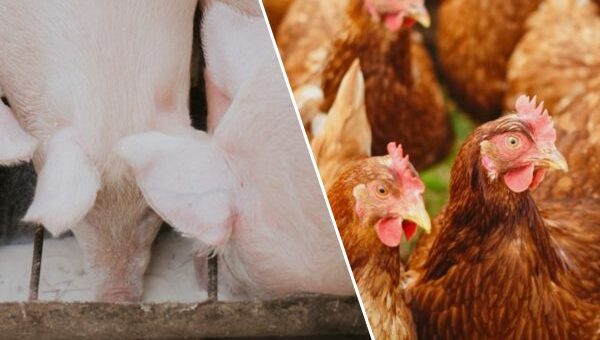
What is the soya bean replacement potential of faba beans in pig and poultry feed?
If there is to be an increased use of temperate-grown legumes, then the pig and poultry industry needs to be convinced that there will be no detrimental impacts on growth performance or carcass/meat quality arising from the inclusion of these raw materials in pig diets, when compared with more conventional diets based on imported SBM. Confidence in the use of peas and faba beans in non-ruminant diets has historically not been strong, partly due to concerns surrounding the number of different cultivars available, irregularity of supply, high costs, the presence of anti-nutritional factors (trypsin inhibitor activity in peas and condensed tannin content in faba beans), and historic, often anecdotal, views that these commodities result in loose faeces, dirty pigs and boar taint.
The Defra-LINK project Green Pig (2008-2012) has focused on reducing reliance on SBM in growing and finishing pigs. The finding of this research showed it is possible to grow pigs without any soya, by replacing the entire SBM content in pig diets with either faba beans or peas, and debunked the aforementioned historic myths on dirty pigs and smelly meat. However, the success of this endeavor is contingent on the ability for these alternative sources of protein to be included in a nutritionally balanced diet. For example, compared to SBM, faba beans and peas have inferior amino acid composition, especially regarding the essential amino acid methionine, but this can be accounted for by adjusting other ingredients in the feed, including the use of economically available supplementary DL-methionine, to balance out the overall nutritional composition.
Overall, the Green Pig study demonstrated that for faba, up until a level of 30% inclusion in pig feed diets there is no detrimental impact on animal performance, carcass weight, and back-fat measurement. This has potentially stimulated the degree of confidence with which we can use homegrown faba beans in pig diets.
On the other hand, most of the SBM used in the UK is destined for chickens, and broilers. Work done by SRUC for Scottish Government has shown that chickens are more sensitive to faba bean levels; whereas it is possible to present grower and finisher pigs with feed consisting of faba bean up to 30% without detrimental effects on nutrition and productivity, in broiler chickens this upper limit seems to be about 15%. If this percentage increases, the chicken’s performance efficiency reduces. Although an increased presence of faba could perhaps be accommodated, the benefits of this change would most likely be outweighed by maintaining the status quo in species productivity and cost. In other breeds, such as slow growing chickens, it may be possible to introduce feed with up to 20% faba bean content. This is thought to be because of a greater intestinal robustness in comparison to faster-growing chickens, meaning they can cope with more variable and potentially challenging diets.
Are there any additional barriers or opportunities to using FBM?
Feed conversion ratio and feed costs both play a big role in determining the profitability of farming, especially in an industry with tight margins. As faba beans contain less digestible protein per kg than SBM does, even at greater commodity costs, the latter remains the most cost-effective option on the bottom line. What could help provide relief are subsidies for all actors in the faba bean value chain, from producers to farmers as end users, as well as a reflection of the cost of these inputs on consumer prices. Given the diverse socio-economic contexts in which consumers make their purchasing decisions, retailers constantly face the challenge of balancing cost with sustainability. There is growing recognition that addressing the environmental threats from unsustainable supply chains requires considering both the final products and the producers’ perceptions of their customers' needs.
Growing faba beans on-farm also presents biological benefits. The crop’s ability to capture nitrogen in its nodules and fixate the chemical in the soil, leaving residual deposits, means future crops can benefit from these nutrients without needing excessive synthetic supplements. In addition to improving a farm’s carbon footprint, this can save costs spent on fertiliser as well.
Despite these environmental benefits, farmers remain confronted with risk and uncertainty associated with transitioning and replacing familiar crops with novel ones. Unlike UK cereals and oilseeds, faba beans are not historically associated with constant yields. Farmers need to balance the risk of lower yields per hectare with the potential savings in synthetic inputs for their usual crops. It is, however, challenging to determine how to much these savings will materialize. As a result, farmers may often take a "better safe than sorry" approach, continuing to use nitrogen-based fertilizers even when growing faba beans. The large number of demonstration trials taking place within the aforementioned NCS project aim to provide growers the confidence of making use of pulses in this way.
Finally, feed processing plants also need to be appropriately equipped for input changes. This may involve having to adapt production patterns to more seasonal faba bean supply patterns, as well as investing in additional and separate storage bins for different feed types. While the feed industry recognizes the theoretical benefits that faba beans can have for the sector, the lack of constant supply and market demand has been insufficient to derisk further investment in the appropriate infrastructure.
Sterre Vester, SAC Consulting
and
Jos Houdijk, SRUC
Further Information
Sign up to the FAS newsletter
Receive updates on news, events and publications from Scotland’s Farm Advisory Service

